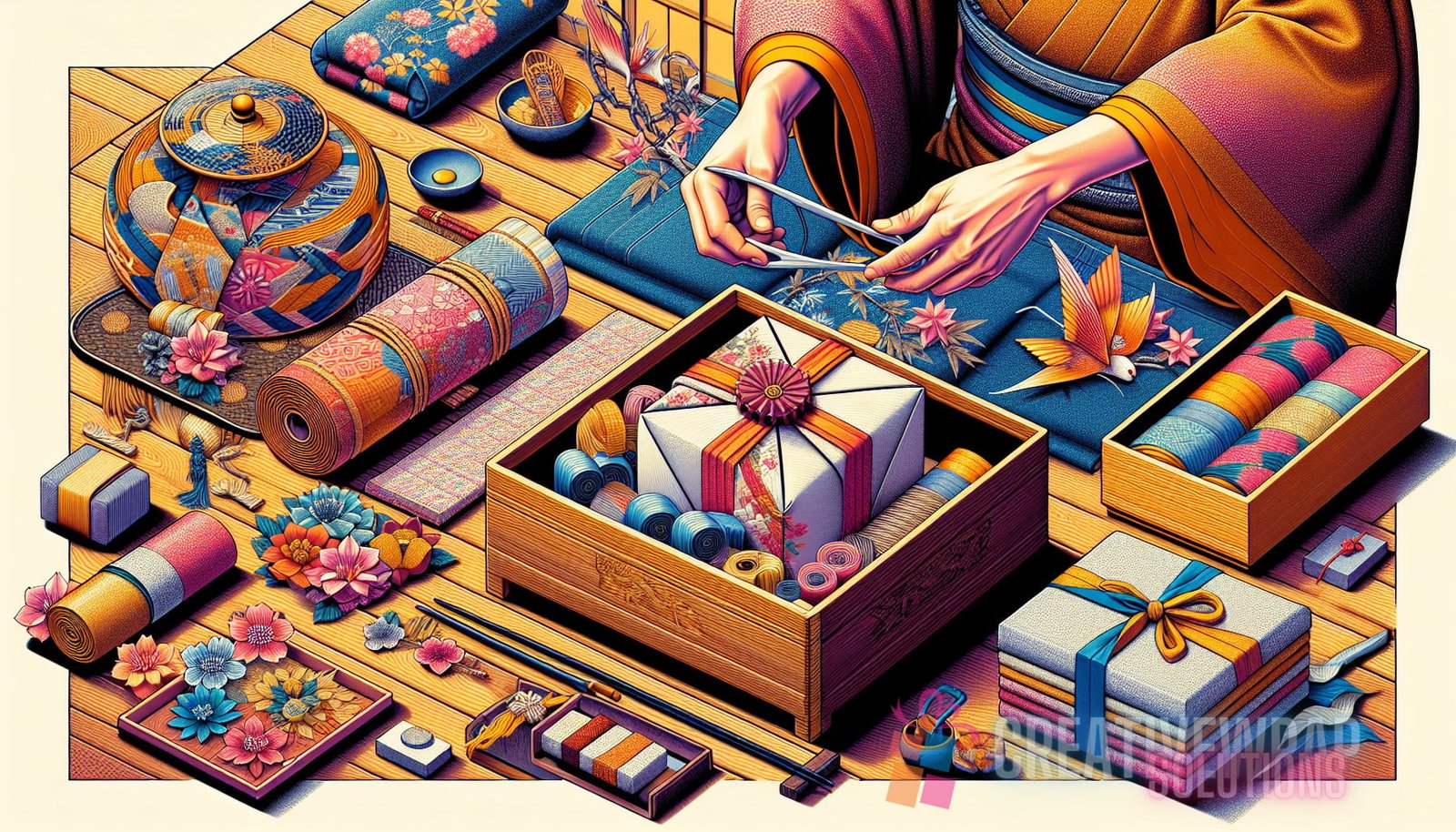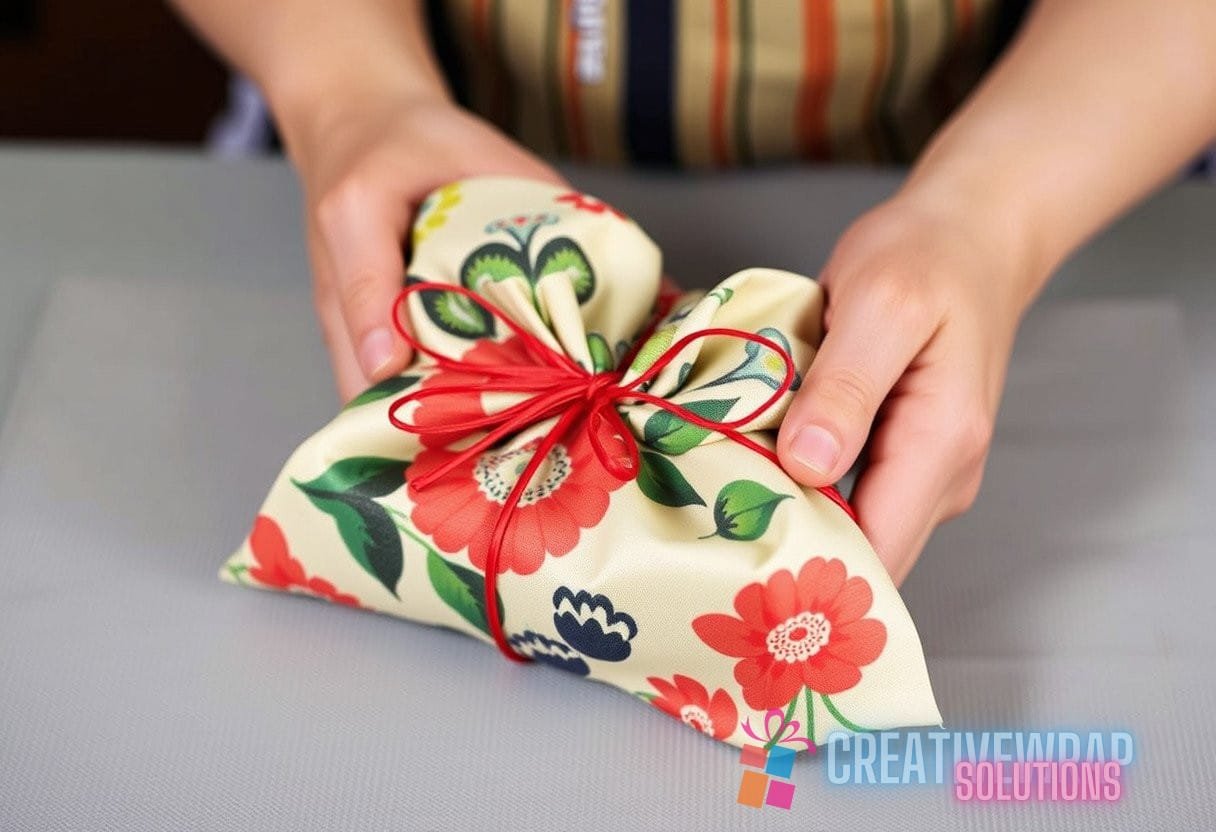Exploring the Timeless Craftsmanship of Japanese Kamiko Wrapping: A Sustainable Fusion of Tradition and Innovation
The art of gift wrapping has reached new heights in recent years, with people around the world becoming more conscious of not only the aesthetics of gift presentation but also the environmental impact. In response to this, the ancient Japanese art of Kamiko fusion has gained popularity as a sustainable alternative to traditional gift wrapping methods. Combining the elegance of kimono fabric, the durability of washi paper, and the creativity of modern design, Kamiko wrapping offers a unique and eco-friendly approach to gift-giving. Here, we delve into the rich history, intricate techniques, and innovative applications of Kamiko fusion, unveiling a world of artistry and sustainability.
The Origins of Kamiko Fusion
The practice of Kamiko fusion originated in Japan during the Edo period (1603-1868), when gift-giving became an integral part of Japanese culture. In order to elevate the act of giving and receiving gifts, the tradition of wrapping items in cloth or fabric was born. This method, known as “furoshiki,” transformed simple objects into beautiful and meaningful presentations. Over time, artisans began to experiment with different materials and techniques to create unique gift wraps that reflected the cultural values and artistic sensibilities of the time.
One such innovation was the fusion of kimono fabric and washi paper, resulting in Kamiko fusion. Kimono, the traditional Japanese garment, is renowned for its exquisite patterns, vibrant colors, and meticulous craftsmanship. Washi paper, made from the inner bark of the mulberry tree, is known for its strength, beauty, and eco-friendliness. By combining these two esteemed materials, craftsmen were able to create gift wraps that exuded elegance, durability, and a sense of cultural heritage.
While Kamiko fusion has its roots in traditional Japanese craftsmanship, it has evolved over the years to incorporate modern design elements and techniques. Today, Kamiko wrapping is a fusion of tradition and innovation, blending timeless aesthetics with contemporary creativity to create visually striking and environmentally conscious gift presentations.
The Intricacies of Kamiko Wrapping Techniques
At the core of Kamiko fusion lies a set of intricate wrapping techniques that transform ordinary objects into mini works of art. These techniques require precision, attention to detail, and a deep understanding of the materials being used.
1. Knot-Free Wrapping
One of the distinctive features of Kamiko wrapping is the absence of knots. Instead of relying on knots to secure the wrapping, the technique involves precise folding and tucking of the fabric, creating a seamless and elegant presentation. This method not only adds to the overall aesthetics but also ensures that the wrapping can be easily undone without damaging the materials.
2. Layered Wrapping
In Kamiko fusion, layering is a key technique that adds depth and dimension to the gift wrap. By strategically layering different fabrics and papers, craftsmen create visually stunning arrangements that emphasize the patterns, colors, and textures of the materials. This technique allows for endless possibilities and encourages creativity in the design process.
3. Decorative Embellishments
To further enhance the beauty and uniqueness of Kamiko wrapping, craftsmen often incorporate decorative embellishments. These can include hand-painted motifs, embroidered designs, or even small accessories such as beads or ribbons. These embellishments not only add a personal touch to the gift presentation but also showcase the craftsmanship and creativity of the artist.
4. Customizable Fitting
One of the advantages of Kamiko wrapping is its customizable fitting. Unlike traditional wrapping methods that often leave excess material or require multiple folds, Kamiko fusion allows for precise wrapping tailored to the size and shape of the object being wrapped. This not only ensures a neat and tailored finish but also reduces material wastage, making it a sustainable choice for gift wrapping.
The Innovation of Kamiko Fusion in Modern Times
As the world becomes increasingly aware of the environmental impact of consumerism, sustainable alternatives are gaining traction. Kamiko fusion, with its emphasis on eco-friendly materials and intricate craftsmanship, has emerged as a frontrunner in the sustainable gift wrapping movement.
One of the key innovations of Kamiko fusion in modern times is the integration of recycled and upcycled materials. Japanese artisans have been incorporating reclaimed kimono fabric and vintage washi paper into their designs, breathing new life into these cherished materials. This practice not only reduces waste but also preserves the cultural heritage embodied in these textiles and papers.
Furthermore, Kamiko fusion has embraced technological advancements to expand its applications. The rise of digital printing technology has allowed craftsmen to create custom-designed fabrics, featuring intricate patterns and detailed motifs. By combining these digitally printed fabrics with traditional washi paper, artisans can produce unique and visually striking Kamiko wraps that seamlessly blend tradition and innovation.
Kamiko fusion has also found its way into contemporary fashion and interior design. The elegance and versatility of Kamiko wraps have inspired designers to incorporate these techniques into clothing, accessories, and home decor items. The fusion of traditional craftsmanship with modern design sensibilities has resulted in a range of innovative products that reflect the beauty and sustainability of Kamiko wrapping.

The Environmental Benefits of Kamiko Wrapping
One of the main appeals of Kamiko wrapping is its environmental sustainability. With the global shift towards eco-friendly practices, Kamiko fusion offers a viable alternative to conventional gift wrapping materials such as plastic wrap and disposable paper. Here are some of the environmental benefits of Kamiko wrapping:
1. Reduction in Single-Use Waste
Unlike disposable gift wrap materials, Kamiko fusion offers a reusable option that reduces single-use waste. By using durable fabrics and papers, Kamiko wraps can be used repeatedly for various occasions. This not only reduces the demand for single-use wrapping materials but also minimizes waste generation and landfill impact.
2. Utilization of Sustainable Materials
Kamiko wrapping prioritizes the use of sustainable materials such as washi paper and reclaimed kimono fabric. Washi paper is made from renewable resources and undergoes a minimal production process, making it a highly sustainable choice. Reclaimed kimono fabric extends the lifespan of these precious textiles, preventing them from ending up in landfills.
3. Preservation of Cultural Heritage
Kamiko fusion plays a crucial role in preserving Japan’s cultural heritage. By incorporating traditional textiles and papers into contemporary designs, artisans ensure that these precious materials continue to be valued and cherished. This practice not only promotes sustainable consumption but also supports local communities and artisans who carry on the legacy of Kamiko wrapping.
4. Inspiring Sustainable Gift-Giving Practices
Through its elegant and eco-friendly presentation, Kamiko fusion inspires individuals to adopt sustainable gift-giving practices. By choosing Kamiko wraps, individuals can actively contribute to reducing their environmental footprint and promoting a more mindful approach to gifting. This creates a ripple effect, encouraging others to follow suit and embrace sustainable alternatives.
The Future of Kamiko Wrapping
Kamiko fusion represents a harmonious blend of tradition and innovation, combining the timeless beauty of Japanese textiles and papers with modern design techniques. As the world becomes more environmentally conscious, the demand for sustainable gift wrapping solutions will continue to rise. Kamiko wrapping, with its rich history, intricate craftsmanship, and environmental benefits, is poised to play a significant role in the future of gift presentation.
With the rapid advancements in technology and the growing interest in sustainable practices, we can expect to see further innovation in Kamiko fusion. Digital printing technology will allow for even more intricate and customizable designs, enabling craftsmen to create truly one-of-a-kind Kamiko wraps. Additionally, the integration of smart textiles and eco-friendly dyes will introduce new possibilities in terms of functionality and sustainability.
Furthermore, the popularity of Kamiko fusion is spreading beyond Japan, with artisans and designers from around the world discovering its beauty and sustainability. This cross-cultural exchange will undoubtedly lead to new interpretations and applications of Kamiko wrapping, creating a global community of Kamiko enthusiasts.
As we embark on this journey of discovery and appreciation for Kamiko fusion, let us embrace the fusion of tradition and innovation, celebrating the sustainability and timeless craftsmanship it offers. Through Kamiko wrapping, we can give the gift of beauty, culture, and sustainability to ourselves and to future generations.
External link
To learn more about the art of Kamiko wrapping, please visit Wikipedia’s page on Furoshiki.


